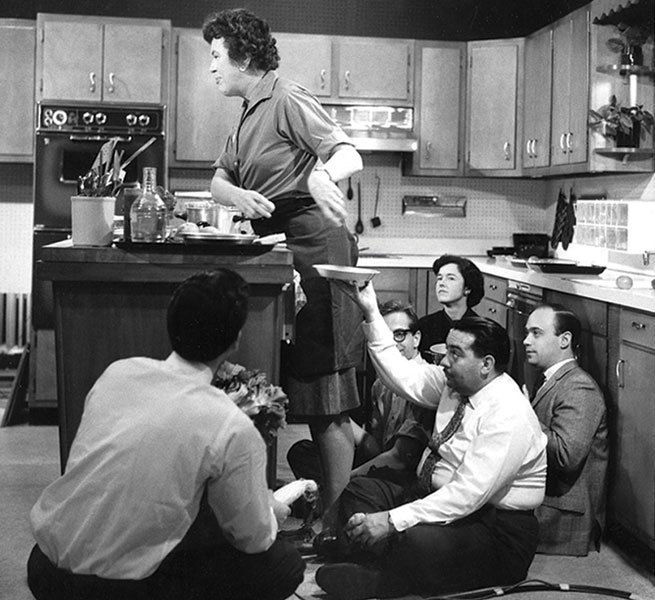Here in Karbohemia, we have no trouble understanding why little girls yearn to be a princess. The idea that you might lead a life where everyone worships you simply for being born is hard to resist. Who doesn’t want to enter a room, feel the crowd swell with love, express a wee desire, then watch while the footmen clonk heads racing to fulfill it? Who doesn’t want to believe that you can be well looked after and well taken care of through no agency of your own, but simply because you’re a princess. It’s an infantile desire, but a perfectly compelling one.
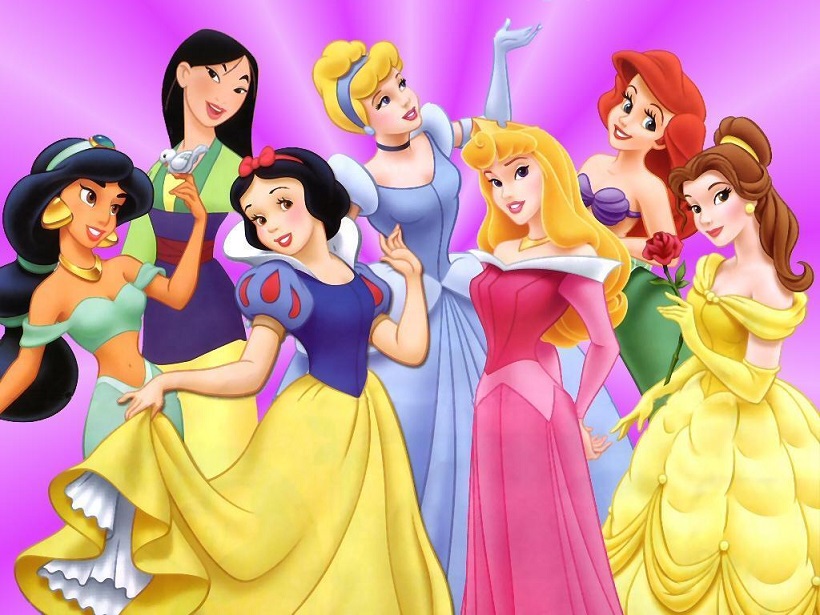
In the event you thought princess lust had faded, this posse pulls down four billion a year. (From the Disney Princess Wallpaper Collection)
While it’s true there are other princesses who are less ornamental, geared to woo the imagination of the more active girl who wants to be worshiped, while still having the opportunity to kick a little ass (Merida, the impetuous princess who stars in Pixar’s Brave is one), the problem is the same: they, along with their imaginary fortunes, kingdoms, and staggering wardrobe, don’t really exist.
Well, except this one:
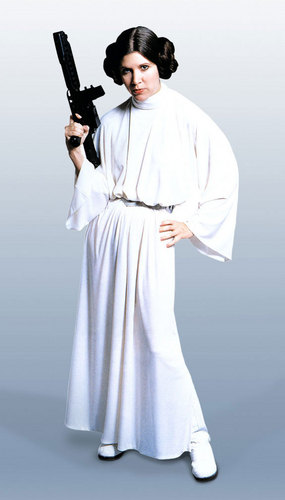
She came into our lives in the form of a low-resolution hologram, surrounded by a blue aura. She possessed classified information that would save the galaxy, and wore a white toga-like dress that was so plain, yet so amazingly drapey, we knew she must be someone extraordinary.
The strange and discomfiting thing about princess-yearning is that even though, when pressed, girls will admit that it’s all pretend, they don’t quite believe it. Between fairy tale weddings, red carpet culture (there’s also an online game aimed at little girls called Bride on the Red Carpet, stoking a mash-up fantasy of glamor, love, adoration, and swag bags), and whatever nonsense the Kardashians have gotten themselves up to, there exists the chance that just maybe, they can grow up to be pampered, adored and unburdened by any responsibility, save rocking that ball gown. The possibility is further reinforced in real life, by the existence of That Girl in High School — the one with the long wavy-but-never-frizzy hair, nice teeth, and boys buzzing around anxious to do her bidding — who is always, inevitably, the Prom or Homecoming Queen.
But the song remains the same: You can play princess all you want, but sooner or later life will correct any false notions you may have that just by walking into a room wearing a pretty dress and a lot of sparkly jewelry, you’re doing your life’s work. I’m not going to even bother pointing out that there are a few genuine princesses roaming the planet, and from what we can tell, they are as miserable as everyone else. (Kate Middleton is a duchess.)
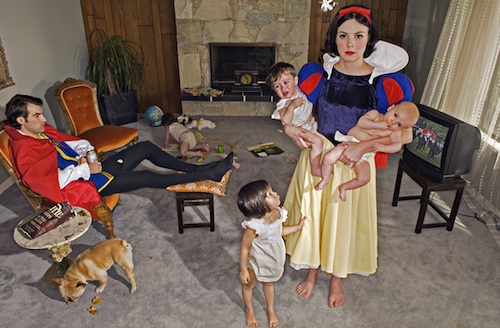
I hate it when that happens. (From Dina Goldstein’s satisfying and alarming series, Fallen Princesses.)
Julia Child, born a hundred years ago, was no less attracted to the possibility of being a princess than the rest of us. She caught the drama bug early and auditioned for every school play that came along, at both Westridge and Polytechnic, the two grade schools she attended in Pasadena, and then the Katherine Branson School in then-rural Marin County. A monstrous wall of reality crashed down upon her almost immediately. Not only was she never considered for the princess/sweet maiden/sassy ingénue roles, her great height, gangly limbs, and boisterous nature assured she was never offered anything but parts suitable for husky boys: the villain, the monster, the Emperor.
She got the message, loud and fast: that traditional female princess fantasy? Not for you. Not for you the illusion that just by having a small waist and a pleasing manner, the world will fall at your feet. Not for you the hope that being pretty in pink will be all that is required.
Despite Julia’s great height — she topped out at 6’3″, and for her entire school career she was the tallest person in her class — and her love of pranks and practical jokes, she was emotional. She was sensitive. She was a girl. She didn’t want to play the monster, the villain, the Emperor.
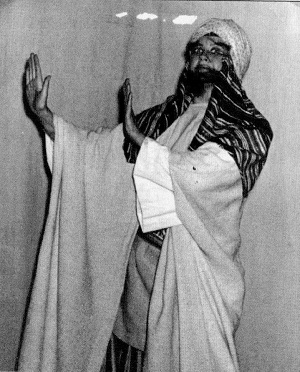
Julia plays the Emperor in a Pasadena Junior League production of the same name. Such wicked eye-acting!
But she was also pragmatic and optimistic. Then and always, she worked with what she had. She realized that she had a choice: she could spend her life trying, and always failing, to be cast as a princess, or she could embrace her height, her quick wits and big personality and she could go with it. She could own her role as the Emperor, who, unlike a princess, is active, not passive, takes up a lot of space, strides around issuing edicts and proclamations. Expresses not desires, but demands.
After a while, she realized that being the Emperor was better than being a princess. She could blast through the world being exactly who she was, fully occupying the space she inhabited, thinking her thoughts, doing her deeds, without depending on anyone’s approval. Once she busted out of conventional roles, the freedom she felt was nothing less than revolutionary.
sources: Disney princesses/www.fanpop.com;Princess Leia/www.fanpop.com; Snow White, photographer Dina Goldstein/www.fallenprincesses.com; Julia Child/Appetite for Life:The Biography of Julia Child by Noël Riley Fitch; Julia Child/www.pbs.org


